Ideal Standard unveils the curiosities from the report "How to optimise bathroom space for modern households”
News Infurma02/05/2013
Ideal Standard has created the new concept "A Beautifu Use Of Space" after conducting a study on the different uses of the bathrooms. “Bathroom behaviours; how to optimise bathroom space for modern households” exposes a project ever undertaken using: motion-mapping tracker technology to monitor bathroom behavious, unveils the fascinating curiosities about family habits.  Starting Point Research was undertaken by Ideal Standard to reveal demographic differences in how bathroom space is utilized and the human behaviours within it. They used a combination of original quantitative and qualitative research focusing on respondents in four European countries: UK, Italy, France and Germany. This was supplemented by an academic literature review conducted by Dr. John Curran. The original quantitative data1 used in this paper originated from nationally representative, structured surveys conducted in each of the participating countries. The survey findings are based on 4,065 responses and explore bathroom behaviours and attitudes. The quantitative data has helped Ideal Standard evaluate and validate the findings of qualitative research conducted in parallel. Eight bathrooms were selected, representing as many different demographic groups as possible. Selection took into consideration practical issues relating to the installation of motion-mapping technology. In a first for bathroom research, Ideal Standard created a prototype motionmapping tracker3 to monitor bathroom behaviours. By adapting depth sensors, which provide accurate 3D tracking of the human body, and using two sensors in each bathroom, we were able to track up to four people at a time at each location. The use of multiple sensors also ensured the Ideal Standard team could track people in non-uniform spaces within the bathroom. The data comprised details of the position and rotation of 22 key joints in the human body. This data was tagged with a time code and a unique identifier per country and machine. It was then synched in real time from the location to a management hub in London. From the central hub, the team used bespoke software to recreate the skeletons and perform statistical analysis on their movements and timings within the spaces. Triangulation of the data sources allowed the Ideal Standard team to identify a wealth of information, patterns, trends and themes in bathroom usage. The results were published in a White Book entitled "Bathroom behaviours; how to optimise bathroom space for modern households" at ISH 2013. The study had the collaboration of anthropologist John Curran and designers Robin Levien and Achim Pohl. Meet the families: Sara Galer, UK Sara (34) lives with her husband Paul and three year old son Sam in Rotherham, England. They have a five bedroom house, but a very small family bathroom. Both the bath and shower are in high demand. Paul finds the shower gives him good thinking-time for new business ideas while their son uses the bath for extended playtime.
Starting Point Research was undertaken by Ideal Standard to reveal demographic differences in how bathroom space is utilized and the human behaviours within it. They used a combination of original quantitative and qualitative research focusing on respondents in four European countries: UK, Italy, France and Germany. This was supplemented by an academic literature review conducted by Dr. John Curran. The original quantitative data1 used in this paper originated from nationally representative, structured surveys conducted in each of the participating countries. The survey findings are based on 4,065 responses and explore bathroom behaviours and attitudes. The quantitative data has helped Ideal Standard evaluate and validate the findings of qualitative research conducted in parallel. Eight bathrooms were selected, representing as many different demographic groups as possible. Selection took into consideration practical issues relating to the installation of motion-mapping technology. In a first for bathroom research, Ideal Standard created a prototype motionmapping tracker3 to monitor bathroom behaviours. By adapting depth sensors, which provide accurate 3D tracking of the human body, and using two sensors in each bathroom, we were able to track up to four people at a time at each location. The use of multiple sensors also ensured the Ideal Standard team could track people in non-uniform spaces within the bathroom. The data comprised details of the position and rotation of 22 key joints in the human body. This data was tagged with a time code and a unique identifier per country and machine. It was then synched in real time from the location to a management hub in London. From the central hub, the team used bespoke software to recreate the skeletons and perform statistical analysis on their movements and timings within the spaces. Triangulation of the data sources allowed the Ideal Standard team to identify a wealth of information, patterns, trends and themes in bathroom usage. The results were published in a White Book entitled "Bathroom behaviours; how to optimise bathroom space for modern households" at ISH 2013. The study had the collaboration of anthropologist John Curran and designers Robin Levien and Achim Pohl. Meet the families: Sara Galer, UK Sara (34) lives with her husband Paul and three year old son Sam in Rotherham, England. They have a five bedroom house, but a very small family bathroom. Both the bath and shower are in high demand. Paul finds the shower gives him good thinking-time for new business ideas while their son uses the bath for extended playtime. 
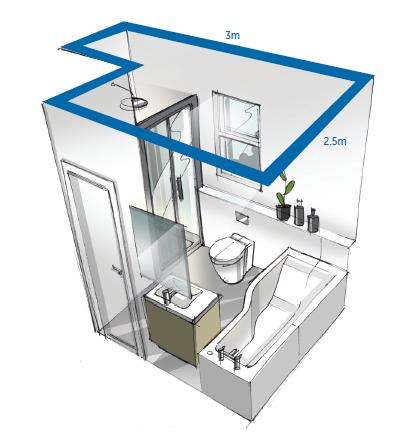 Marta Kisluk: UK Marta (32) lives with her boyfriend and his cousin in a North London apartment spanning two floors. The shower in the main bathroom is in high demand in the mornings with Marta and her boyfriend fighting to get ready before 8am. Marta uses the shower to reinvigorate before work, but she is often frustrated by low water pressure due to the bathroom’s location at the top of the house.
Marta Kisluk: UK Marta (32) lives with her boyfriend and his cousin in a North London apartment spanning two floors. The shower in the main bathroom is in high demand in the mornings with Marta and her boyfriend fighting to get ready before 8am. Marta uses the shower to reinvigorate before work, but she is often frustrated by low water pressure due to the bathroom’s location at the top of the house. 
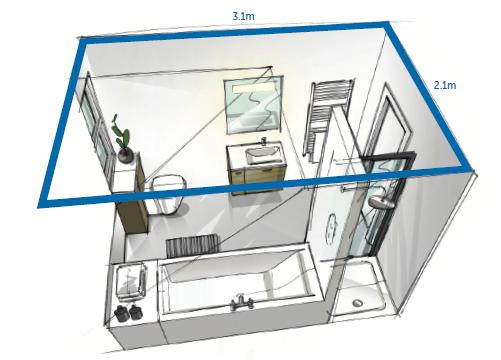 Alberto Mora, Italia Alberto (26) lives in Milan with his flat mate Sara. They have one bathroom with a bath, as well as a bidet. The housemates regularly compete to use the bathroom in the mornings which often results in both of them using the space at the same time. This often means one person in the bath whilst the other brushes their teeth. Alberto’s biggest problem is a lack of storage. He would prefer to have a shower installed instead of a bath.
Alberto Mora, Italia Alberto (26) lives in Milan with his flat mate Sara. They have one bathroom with a bath, as well as a bidet. The housemates regularly compete to use the bathroom in the mornings which often results in both of them using the space at the same time. This often means one person in the bath whilst the other brushes their teeth. Alberto’s biggest problem is a lack of storage. He would prefer to have a shower installed instead of a bath. 
 Fiammetta Vitali, Italia Fiammetta (24) lives with her partner in a one bedroom apartment in Milan. Her bathroom contains a bath and standing shower combination and a washing machine. For Fiammetta the bathroom is a place for transformation. It is a multi-functional space with room to get ready, as well as acting as a laundry. It is also her cat’s bathroom, housing a litter tray in one corner.
Fiammetta Vitali, Italia Fiammetta (24) lives with her partner in a one bedroom apartment in Milan. Her bathroom contains a bath and standing shower combination and a washing machine. For Fiammetta the bathroom is a place for transformation. It is a multi-functional space with room to get ready, as well as acting as a laundry. It is also her cat’s bathroom, housing a litter tray in one corner. 
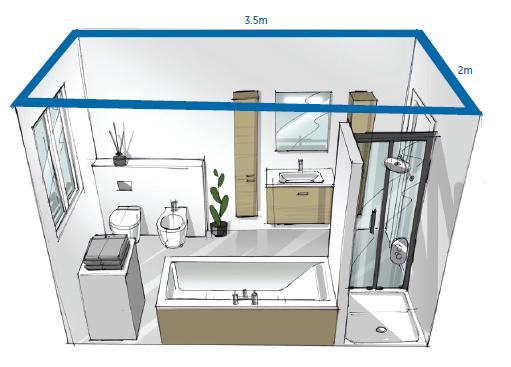 Arnaud y Aurelie Thizy, France Aurelie and Arnaud (33) Thizy live in Lyon, France with their two children, aged three years and five months. Their main family bathroom has a bath and seated shower combination, plus a washing machine and dryer for laundry. Aurelie spends the most time in the bathroom, washing and playing with the children in the bath and doing the laundry.
Arnaud y Aurelie Thizy, France Aurelie and Arnaud (33) Thizy live in Lyon, France with their two children, aged three years and five months. Their main family bathroom has a bath and seated shower combination, plus a washing machine and dryer for laundry. Aurelie spends the most time in the bathroom, washing and playing with the children in the bath and doing the laundry. 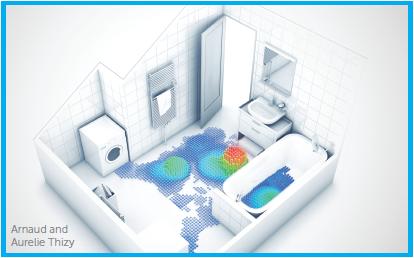
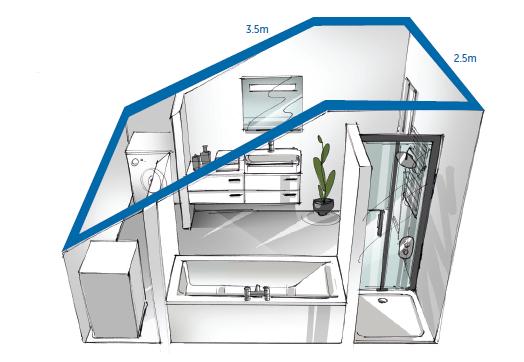 Aurelie Poss, France Aurelie (30) lives alone in Paris, France in a modern apartment with a wet-room style bathroom. Aurelie sees the bathroom as a place for transformation and enjoys spending time in the shower. She is fairly content with her bathroom, but ideally she would like to have the option of a bath.
Aurelie Poss, France Aurelie (30) lives alone in Paris, France in a modern apartment with a wet-room style bathroom. Aurelie sees the bathroom as a place for transformation and enjoys spending time in the shower. She is fairly content with her bathroom, but ideally she would like to have the option of a bath. 
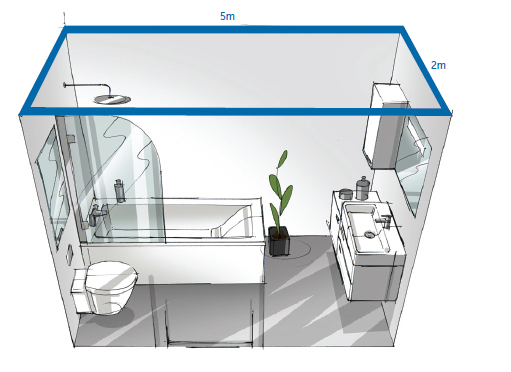 Martin Bischof, Germany Martin (33) lives with his girlfriend in Solingen, Germany. They have a large bathroom with stand-alone shower, toilet and basin. The couple’s differing work schedules mean they rarely have to compete for time in the bathroom. They see the space very much as a place to transform rather than relax. Martin believes the addition of a bath would make the couple more likely to spend more time in the room. He raises concerns that if the couple were to have a child, the room’s needs would change.
Martin Bischof, Germany Martin (33) lives with his girlfriend in Solingen, Germany. They have a large bathroom with stand-alone shower, toilet and basin. The couple’s differing work schedules mean they rarely have to compete for time in the bathroom. They see the space very much as a place to transform rather than relax. Martin believes the addition of a bath would make the couple more likely to spend more time in the room. He raises concerns that if the couple were to have a child, the room’s needs would change. 
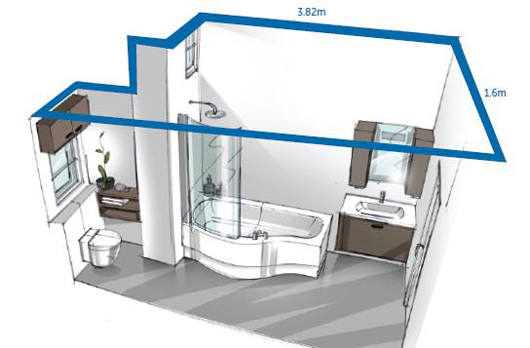 David Ochsenknecht, Germany David (33) lives in Wuppertal, Germany with his partner Nicole (35), his four year old child Yannis, and there is a second child on the way. The main family bathroom features a bath with a shower adaptation, as well as a stand-alone shower. The family dreams of having a space for relaxation and reinvigoration but admits the current bathroom inspires neither.
David Ochsenknecht, Germany David (33) lives in Wuppertal, Germany with his partner Nicole (35), his four year old child Yannis, and there is a second child on the way. The main family bathroom features a bath with a shower adaptation, as well as a stand-alone shower. The family dreams of having a space for relaxation and reinvigoration but admits the current bathroom inspires neither. 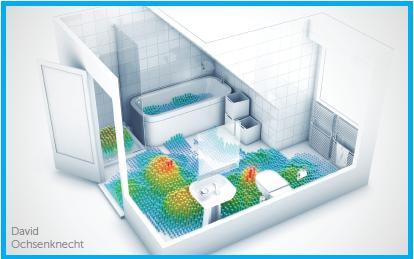
 10 Fast Facts From the Research... • The average person’s morning bathroom routine (shower, toilet, basin) takes 25m59s • Brits have by far the quickest morning routine at 19m42s – nearly eight minutes faster than the Germans (27m35s), Italians (27m33s) and French (27m11s) • Women spend an average of 7% (1m13s) longer on the standard bathroom routine than men • There’s nothing to choose between the genders when it comes to bathing – of those who have a bath only 36% are choosing it over a shower as part of the daily routine • Under 30s are spending an average 1m39s longer on the toilet than over 55s – and they’re much more likely to be checking Facebook than reading a book • UK households use their baths the least – 33% of those with a separate bath use it just a couple of times a month or less • The French are the biggest bath fans – 50% of those with a separate bath use it at least once a day • 35% of French households have no toilet in the main bathroom, while 95% of Italians have a bidet – and use it everday • 18–30s want a bathroom space they can share, but this gets less appealing when respondents hit their 30s – by the time they hit their 50s the bathroom is a purely private space • Germans are the least happy with their current bathrooms, while the Brits tend to be the happiest Source: Ideal Standard Read more news related Ideal Standard published at Infurma Visit the Ideal Standard website
10 Fast Facts From the Research... • The average person’s morning bathroom routine (shower, toilet, basin) takes 25m59s • Brits have by far the quickest morning routine at 19m42s – nearly eight minutes faster than the Germans (27m35s), Italians (27m33s) and French (27m11s) • Women spend an average of 7% (1m13s) longer on the standard bathroom routine than men • There’s nothing to choose between the genders when it comes to bathing – of those who have a bath only 36% are choosing it over a shower as part of the daily routine • Under 30s are spending an average 1m39s longer on the toilet than over 55s – and they’re much more likely to be checking Facebook than reading a book • UK households use their baths the least – 33% of those with a separate bath use it just a couple of times a month or less • The French are the biggest bath fans – 50% of those with a separate bath use it at least once a day • 35% of French households have no toilet in the main bathroom, while 95% of Italians have a bidet – and use it everday • 18–30s want a bathroom space they can share, but this gets less appealing when respondents hit their 30s – by the time they hit their 50s the bathroom is a purely private space • Germans are the least happy with their current bathrooms, while the Brits tend to be the happiest Source: Ideal Standard Read more news related Ideal Standard published at Infurma Visit the Ideal Standard website
 Starting Point Research was undertaken by Ideal Standard to reveal demographic differences in how bathroom space is utilized and the human behaviours within it. They used a combination of original quantitative and qualitative research focusing on respondents in four European countries: UK, Italy, France and Germany. This was supplemented by an academic literature review conducted by Dr. John Curran. The original quantitative data1 used in this paper originated from nationally representative, structured surveys conducted in each of the participating countries. The survey findings are based on 4,065 responses and explore bathroom behaviours and attitudes. The quantitative data has helped Ideal Standard evaluate and validate the findings of qualitative research conducted in parallel. Eight bathrooms were selected, representing as many different demographic groups as possible. Selection took into consideration practical issues relating to the installation of motion-mapping technology. In a first for bathroom research, Ideal Standard created a prototype motionmapping tracker3 to monitor bathroom behaviours. By adapting depth sensors, which provide accurate 3D tracking of the human body, and using two sensors in each bathroom, we were able to track up to four people at a time at each location. The use of multiple sensors also ensured the Ideal Standard team could track people in non-uniform spaces within the bathroom. The data comprised details of the position and rotation of 22 key joints in the human body. This data was tagged with a time code and a unique identifier per country and machine. It was then synched in real time from the location to a management hub in London. From the central hub, the team used bespoke software to recreate the skeletons and perform statistical analysis on their movements and timings within the spaces. Triangulation of the data sources allowed the Ideal Standard team to identify a wealth of information, patterns, trends and themes in bathroom usage. The results were published in a White Book entitled "Bathroom behaviours; how to optimise bathroom space for modern households" at ISH 2013. The study had the collaboration of anthropologist John Curran and designers Robin Levien and Achim Pohl. Meet the families: Sara Galer, UK Sara (34) lives with her husband Paul and three year old son Sam in Rotherham, England. They have a five bedroom house, but a very small family bathroom. Both the bath and shower are in high demand. Paul finds the shower gives him good thinking-time for new business ideas while their son uses the bath for extended playtime.
Starting Point Research was undertaken by Ideal Standard to reveal demographic differences in how bathroom space is utilized and the human behaviours within it. They used a combination of original quantitative and qualitative research focusing on respondents in four European countries: UK, Italy, France and Germany. This was supplemented by an academic literature review conducted by Dr. John Curran. The original quantitative data1 used in this paper originated from nationally representative, structured surveys conducted in each of the participating countries. The survey findings are based on 4,065 responses and explore bathroom behaviours and attitudes. The quantitative data has helped Ideal Standard evaluate and validate the findings of qualitative research conducted in parallel. Eight bathrooms were selected, representing as many different demographic groups as possible. Selection took into consideration practical issues relating to the installation of motion-mapping technology. In a first for bathroom research, Ideal Standard created a prototype motionmapping tracker3 to monitor bathroom behaviours. By adapting depth sensors, which provide accurate 3D tracking of the human body, and using two sensors in each bathroom, we were able to track up to four people at a time at each location. The use of multiple sensors also ensured the Ideal Standard team could track people in non-uniform spaces within the bathroom. The data comprised details of the position and rotation of 22 key joints in the human body. This data was tagged with a time code and a unique identifier per country and machine. It was then synched in real time from the location to a management hub in London. From the central hub, the team used bespoke software to recreate the skeletons and perform statistical analysis on their movements and timings within the spaces. Triangulation of the data sources allowed the Ideal Standard team to identify a wealth of information, patterns, trends and themes in bathroom usage. The results were published in a White Book entitled "Bathroom behaviours; how to optimise bathroom space for modern households" at ISH 2013. The study had the collaboration of anthropologist John Curran and designers Robin Levien and Achim Pohl. Meet the families: Sara Galer, UK Sara (34) lives with her husband Paul and three year old son Sam in Rotherham, England. They have a five bedroom house, but a very small family bathroom. Both the bath and shower are in high demand. Paul finds the shower gives him good thinking-time for new business ideas while their son uses the bath for extended playtime. 
 Marta Kisluk: UK Marta (32) lives with her boyfriend and his cousin in a North London apartment spanning two floors. The shower in the main bathroom is in high demand in the mornings with Marta and her boyfriend fighting to get ready before 8am. Marta uses the shower to reinvigorate before work, but she is often frustrated by low water pressure due to the bathroom’s location at the top of the house.
Marta Kisluk: UK Marta (32) lives with her boyfriend and his cousin in a North London apartment spanning two floors. The shower in the main bathroom is in high demand in the mornings with Marta and her boyfriend fighting to get ready before 8am. Marta uses the shower to reinvigorate before work, but she is often frustrated by low water pressure due to the bathroom’s location at the top of the house. 
 Alberto Mora, Italia Alberto (26) lives in Milan with his flat mate Sara. They have one bathroom with a bath, as well as a bidet. The housemates regularly compete to use the bathroom in the mornings which often results in both of them using the space at the same time. This often means one person in the bath whilst the other brushes their teeth. Alberto’s biggest problem is a lack of storage. He would prefer to have a shower installed instead of a bath.
Alberto Mora, Italia Alberto (26) lives in Milan with his flat mate Sara. They have one bathroom with a bath, as well as a bidet. The housemates regularly compete to use the bathroom in the mornings which often results in both of them using the space at the same time. This often means one person in the bath whilst the other brushes their teeth. Alberto’s biggest problem is a lack of storage. He would prefer to have a shower installed instead of a bath. 
 Fiammetta Vitali, Italia Fiammetta (24) lives with her partner in a one bedroom apartment in Milan. Her bathroom contains a bath and standing shower combination and a washing machine. For Fiammetta the bathroom is a place for transformation. It is a multi-functional space with room to get ready, as well as acting as a laundry. It is also her cat’s bathroom, housing a litter tray in one corner.
Fiammetta Vitali, Italia Fiammetta (24) lives with her partner in a one bedroom apartment in Milan. Her bathroom contains a bath and standing shower combination and a washing machine. For Fiammetta the bathroom is a place for transformation. It is a multi-functional space with room to get ready, as well as acting as a laundry. It is also her cat’s bathroom, housing a litter tray in one corner. 
 Arnaud y Aurelie Thizy, France Aurelie and Arnaud (33) Thizy live in Lyon, France with their two children, aged three years and five months. Their main family bathroom has a bath and seated shower combination, plus a washing machine and dryer for laundry. Aurelie spends the most time in the bathroom, washing and playing with the children in the bath and doing the laundry.
Arnaud y Aurelie Thizy, France Aurelie and Arnaud (33) Thizy live in Lyon, France with their two children, aged three years and five months. Their main family bathroom has a bath and seated shower combination, plus a washing machine and dryer for laundry. Aurelie spends the most time in the bathroom, washing and playing with the children in the bath and doing the laundry. 
 Aurelie Poss, France Aurelie (30) lives alone in Paris, France in a modern apartment with a wet-room style bathroom. Aurelie sees the bathroom as a place for transformation and enjoys spending time in the shower. She is fairly content with her bathroom, but ideally she would like to have the option of a bath.
Aurelie Poss, France Aurelie (30) lives alone in Paris, France in a modern apartment with a wet-room style bathroom. Aurelie sees the bathroom as a place for transformation and enjoys spending time in the shower. She is fairly content with her bathroom, but ideally she would like to have the option of a bath. 
 Martin Bischof, Germany Martin (33) lives with his girlfriend in Solingen, Germany. They have a large bathroom with stand-alone shower, toilet and basin. The couple’s differing work schedules mean they rarely have to compete for time in the bathroom. They see the space very much as a place to transform rather than relax. Martin believes the addition of a bath would make the couple more likely to spend more time in the room. He raises concerns that if the couple were to have a child, the room’s needs would change.
Martin Bischof, Germany Martin (33) lives with his girlfriend in Solingen, Germany. They have a large bathroom with stand-alone shower, toilet and basin. The couple’s differing work schedules mean they rarely have to compete for time in the bathroom. They see the space very much as a place to transform rather than relax. Martin believes the addition of a bath would make the couple more likely to spend more time in the room. He raises concerns that if the couple were to have a child, the room’s needs would change. 
 David Ochsenknecht, Germany David (33) lives in Wuppertal, Germany with his partner Nicole (35), his four year old child Yannis, and there is a second child on the way. The main family bathroom features a bath with a shower adaptation, as well as a stand-alone shower. The family dreams of having a space for relaxation and reinvigoration but admits the current bathroom inspires neither.
David Ochsenknecht, Germany David (33) lives in Wuppertal, Germany with his partner Nicole (35), his four year old child Yannis, and there is a second child on the way. The main family bathroom features a bath with a shower adaptation, as well as a stand-alone shower. The family dreams of having a space for relaxation and reinvigoration but admits the current bathroom inspires neither. 
 10 Fast Facts From the Research... • The average person’s morning bathroom routine (shower, toilet, basin) takes 25m59s • Brits have by far the quickest morning routine at 19m42s – nearly eight minutes faster than the Germans (27m35s), Italians (27m33s) and French (27m11s) • Women spend an average of 7% (1m13s) longer on the standard bathroom routine than men • There’s nothing to choose between the genders when it comes to bathing – of those who have a bath only 36% are choosing it over a shower as part of the daily routine • Under 30s are spending an average 1m39s longer on the toilet than over 55s – and they’re much more likely to be checking Facebook than reading a book • UK households use their baths the least – 33% of those with a separate bath use it just a couple of times a month or less • The French are the biggest bath fans – 50% of those with a separate bath use it at least once a day • 35% of French households have no toilet in the main bathroom, while 95% of Italians have a bidet – and use it everday • 18–30s want a bathroom space they can share, but this gets less appealing when respondents hit their 30s – by the time they hit their 50s the bathroom is a purely private space • Germans are the least happy with their current bathrooms, while the Brits tend to be the happiest Source: Ideal Standard Read more news related Ideal Standard published at Infurma Visit the Ideal Standard website
10 Fast Facts From the Research... • The average person’s morning bathroom routine (shower, toilet, basin) takes 25m59s • Brits have by far the quickest morning routine at 19m42s – nearly eight minutes faster than the Germans (27m35s), Italians (27m33s) and French (27m11s) • Women spend an average of 7% (1m13s) longer on the standard bathroom routine than men • There’s nothing to choose between the genders when it comes to bathing – of those who have a bath only 36% are choosing it over a shower as part of the daily routine • Under 30s are spending an average 1m39s longer on the toilet than over 55s – and they’re much more likely to be checking Facebook than reading a book • UK households use their baths the least – 33% of those with a separate bath use it just a couple of times a month or less • The French are the biggest bath fans – 50% of those with a separate bath use it at least once a day • 35% of French households have no toilet in the main bathroom, while 95% of Italians have a bidet – and use it everday • 18–30s want a bathroom space they can share, but this gets less appealing when respondents hit their 30s – by the time they hit their 50s the bathroom is a purely private space • Germans are the least happy with their current bathrooms, while the Brits tend to be the happiest Source: Ideal Standard Read more news related Ideal Standard published at Infurma Visit the Ideal Standard websiteNews Infurma:
Online Magazine of the International Habitat Portal. Design, Contract, Interior Design, Furniture, Lighting and Decoration
